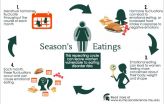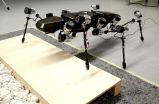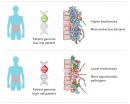(Press-News.org) The genetic abnormality that drives the bone cancer Ewing sarcoma operates through two distinct processes - both activating genes that stimulate tumor growth and suppressing those that should keep cancer from developing. These findings by Massachusetts General Hospital (MGH) investigators, published in the November issue of Cancer Cell, may lead to new therapies targeting these aberrant mechanisms.
The second most common bone cancer in children and young adults, Ewing sarcoma is caused by a chromosomal translocation - switching of genetic segments between two different chromosomes - in which the chromosome 22 gene EWS is fused to the chromosome 11 gene FLI1. Exactly how that abnormality, which produces a fusion protein called EWS-FLI1, leads to tumor development was not known, although it had been recognized that FLI1 and related proteins were transcription factors that regulate the expression of other genes.
Led by Miguel Rivera, MD, and Bradley Bernstein, MD, PhD, of the MGH Department of Pathology and Center for Cancer Research, the investigators analyzed how regulatory changes resulting from the EWS-FLI1 fusion alter the activation and repression of regions across the genome. This approach, called chromatin profiling, is a powerful tool for determining how transcription factors act in cancer and revealed that EWS-FLI1 acts through two different mechanisms.
First the fusion protein converts common repetitive elements within the genome into active enhancing elements that stimulate the expression of other genes. This 'pioneer' function is remarkable, Rivera notes, because while these repeat segments have no known function outside the setting of Ewing sarcoma, they are critical for the development of the tumor. The second property of the EWS-FLI1 fusion is to turn off factors that regulate gene transcription at a different group of sites. In essence the abnormal protein both stimulates the abnormal cellular growth that leads to tumor formation and turns off factors that should keep that growth in check.
"Uncovering the molecular functions of EWS-FLI1 points to processes that may be targeted therapeutically" says Rivera, an assistant professor of Pathology at Harvard Medical School. "In addition, some of the genes directly turned on by EWS-FLI1 may themselves be therapeutic targets. One such gene, the kinase VRK1, is regulated by an EWS-FLI1-dependent enhancer that is active in Ewing sarcoma cell lines, and we found that its expression is essential for the survival of Ewing sarcoma cells. These studies also underscore the importance of performing epigenetic analysis to understand the biological pathways that are altered in cancer."
INFORMATION:
In addition to Bernstein, who is a professor of Pathology at HMS, co-authors of the Cancer Cell paper include co-lead authors Nicolo Riggi, MD, PhD, Birgit Knoechel, MD, PhD, and Shawn Gillespie, of MGH Pathology and Center for Cancer Research. The study is the result of a close collaboration with other investigators at MGH - including Francis Hornicek, MD, PhD, chief of the Orthopædic Oncology Service and co-director of the Center for Sarcoma and Connective Tissue Oncology, and Petur Nielsen, MD, director of Bone and Soft Tissue Pathology. The study was supported by grants from the Burroughs Wellcome Fund, the Howard Hughes Medical Institute, Hyundai Hope on Wheels and the National Human Genome Research Institute.
Massachusetts General Hospital, founded in 1811, is the original and largest teaching hospital of Harvard Medical School. The MGH conducts the largest hospital-based research program in the United States, with an annual research budget of more than $785 million and major research centers in HIV/AIDS, cardiovascular research, cancer, computational and integrative biology, cutaneous biology, human genetics, medical imaging, neurodegenerative disorders, regenerative medicine, reproductive biology, systems biology, transplantation biology and photomedicine.
EAST LANSING, Mich. - 'Tis the season of plenty of food and drink. While celebrating should be joyful, for some women, it's not. All the holiday temptations can add another layer to an already complicated biological process.
It's well known that women undergo hormonal changes every month due to the menstrual cycle. These changes can cause women to eat more, which is a natural, biological occurrence.
However, Michigan State University Foundation Professor Kelly Klump has found that the increased food intake causes some women to become much more preoccupied with their ...
ITHACA, N.Y. - In the fight against global warming, carbon capture - chemically trapping carbon dioxide before it releases into the atmosphere - is gaining momentum, but standard methods are plagued by toxicity, corrosiveness and inefficiency. Using a bag of chemistry tricks, Cornell materials scientists have invented low-toxicity, highly effective carbon-trapping "sponges" that could lead to increased use of the technology.
A research team led by Emmanuel Giannelis, the Walter R. Read Professor of Engineering in the Department of Materials Science and Engineering, has ...
HOUSTON -- (Dec. 16, 2014) -- In one of the most comprehensive laboratory studies of its kind, Rice University scientists traced the uptake and accumulation of quantum dot nanoparticles from water to plant roots, plant leaves and leaf-eating caterpillars.
The study, one of the first to examine how nanoparticles move through human-relevant food chains, found that nanoparticle accumulation in both plants and animals varied significantly depending upon the type of surface coating applied to the particles. The research is available online in the American Chemical Society's ...
This news release is available in German. A research team at Bielefeld University has succeeded in teaching the only robot of its kind in the world how to walk. Its first steps have been recorded in a video. You can watch them in Bielefeld University's latest posting on 'research_tv'. The robot is called Hector, and its construction is modelled on a stick insect. Inspired by the insect, Hector has passive elastic joints and an ultralight exoskeleton. What makes it unique is that it is also equipped with a great number of sensors and it functions according to a biologically ...
DURHAM, N.C. - Duke University scientists have developed new forensic tracers to identify coal ash contamination in water and distinguish it from contamination coming from other sources.
"These new tools can be used by federal and state regulatory agencies to monitor the environmental effects of coal ash and determine whether it has or hasn't impacted the environment," said Avner Vengosh, professor of geochemistry and water quality at Duke's Nicholas School of the Environment. "They can be used to trace the coal ash effluents to their source, even in watersheds where ...
Washington, D.C.--New work from Carnegie's Ivan Naumov and Russell Hemley delves into the chemistry underlying some surprising recent observations about hydrogen, and reveals remarkable parallels between hydrogen and graphene under extreme pressures. Their work is the cover story in the December issue of Accounts of Chemical Research.
Hydrogen is the most-abundant element in the cosmos. With only a single electron per atom, it is deceptively simple. As a result, hydrogen has been a testing ground for theories of the chemical bond since the birth of quantum mechanics ...
MINNEAPOLIS/ST. PAUL (12/16/2014)--A new study by an international team of researchers shows for the first time that people may inherit some of the intestinal bacteria that cause Crohn's disease and ulcerative colitis, collectively know as inflammatory bowel disease (IBD). The study, recently published in Genome Medicine, also confirmed that antibiotics could worsen the imbalance in the gut microbes.
About 1.6 million Americans suffer from Crohn's disease or ulcerative colitis, according to the Crohn's and Colitis Foundation of America. Understanding the causes of these ...
AMHERST, Mass. - In a follow-up to her earlier studies of learning in infancy, developmental psychologist Lisa Scott and colleagues at the University of Massachusetts Amherst are reporting that talking to babies in their first year, in particular naming things in their world, can help them make connections between what they see and hear, and these learning benefits can be seen as much as five years later.
"Learning in infancy between the ages of six to nine months lays a foundation for learning later in childhood," Scott says. "Infants learn labels for people and things ...
WASHINGTON, DC--December 16, 2014--Using mathematical modeling, researchers at New York and Vanderbilt universities have shown that commensal bacteria that cause problems later in life most likely played a key role in stabilizing early human populations. The finding, published in mBio®, the online open-access journal of the American Society for Microbiology, offers an explanation as to why humans co-evolved with microbes that can cause or contribute to cancer, inflammation, and degenerative diseases of aging.
The work sprung from a fundamental question in biology ...
INDIANAPOLIS -- In the first real-world trial of the impact of patient-controlled access to electronic medical records, almost half of the patients who participated withheld clinically sensitive information in their medical record from some or all of their health care providers.
Should patients control who can see specific information in their electronic medical records? How much control should they have? Can doctors and other clinicians provide safe, high-quality care when a patient's preference may deny members of the medical team from seeing portions of the electronic ...






